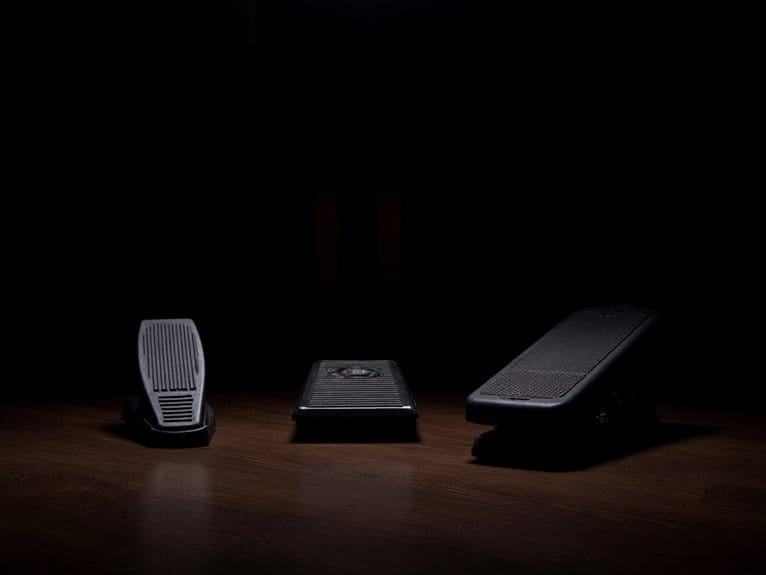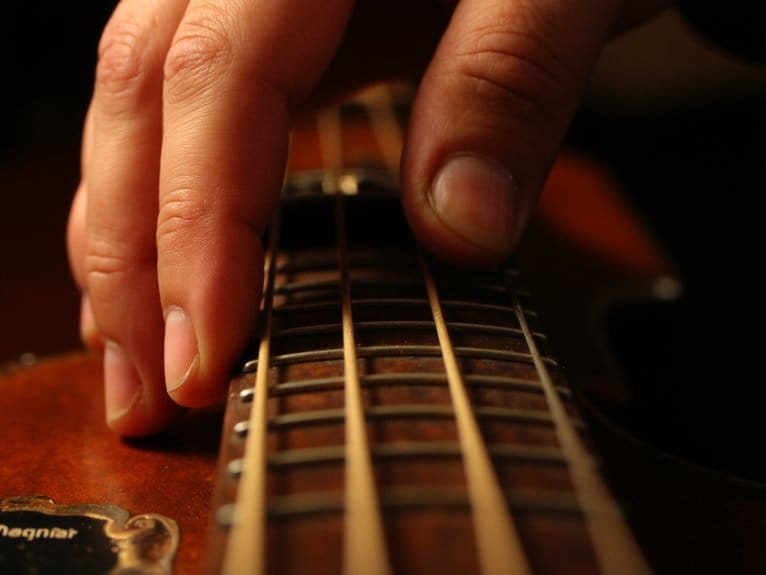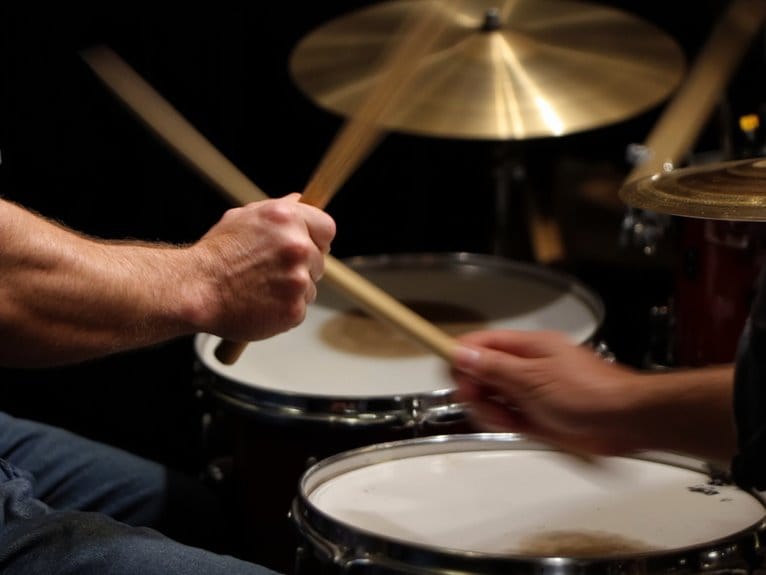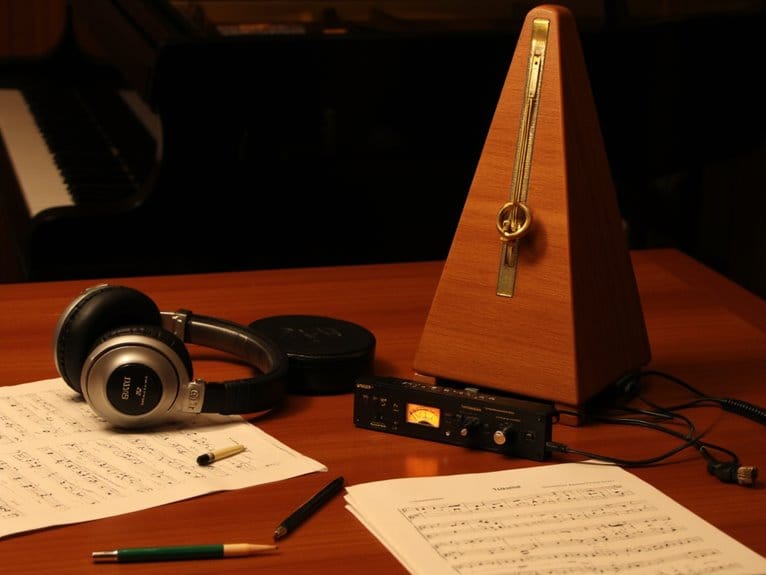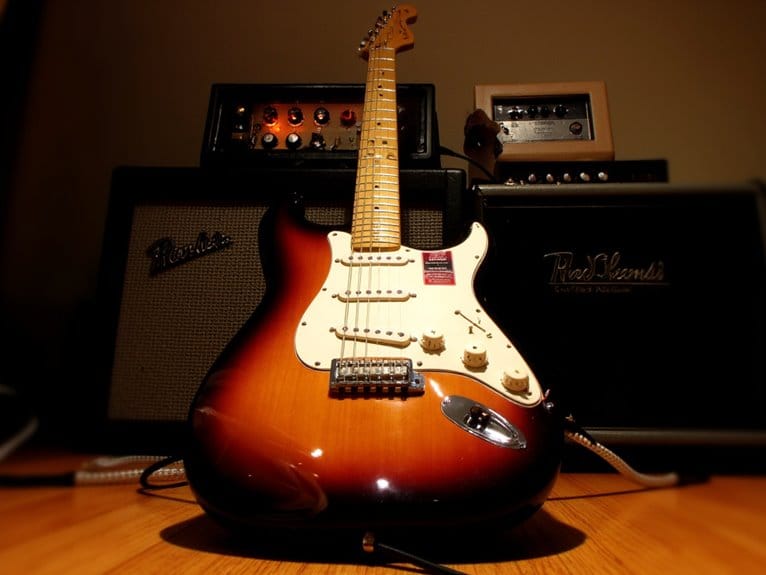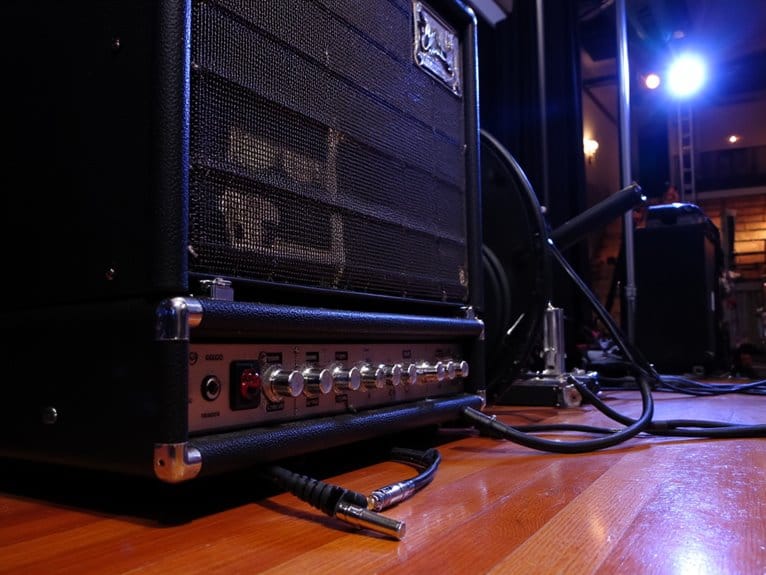Digital Piano Pedals: Sustain, Soft, and Sostenuto Explained
Digital piano pedals transform your playing experience through distinct functions: the sustain pedal electronically lifts dampers to create resonant note connections and richer harmonies, while the soft pedal reduces volume and subtly alters tonal character for intimate passages. The sostenuto pedal selectively holds only notes you’re pressing when activated, enabling complex layering techniques. Digital pianos recreate these effects through advanced sampling technology and MIDI processing, though many lack half-damper capabilities that provide the nuanced control you’ll master with proper technique.
We are supported by our audience. When you purchase through links on our site, we may earn an affiliate commission, at no extra cost for you. Learn more.
Notable Insights
- Sustain pedal lifts dampers electronically, allowing notes to prolong beyond release and creating seamless connections between notes.
- Soft pedal (una corda) reduces volume and alters tonal color for intimate passages without changing note duration.
- Sostenuto pedal selectively sustains only notes held when activated, enabling complex layering while other notes remain unaffected.
- Each pedal serves distinct purposes: sustain creates overlapping resonance, soft changes timbre, sostenuto provides selective control.
- Digital pianos use sampling technology and MIDI processing to recreate acoustic pedal effects with adjustable sensitivity settings.
Understanding the Sustain Pedal and Its Essential Role
The heartbeat of piano expression, the sustain pedal transforms how your digital piano breathes and resonates, creating that essential connection between mechanical key presses and flowing musical phrases.
When you press this fundamental control, you’re mimicking acoustic piano sustain pedal mechanics that lift dampers from strings, allowing notes to ring beyond your finger’s release.
Digital pianos electronically recreate this effect, sustaining tones until you release the pedal or the programmed decay expires.
The expressive capabilities you’ll discover are remarkable—suddenly, your playing gains emotional depth through seamless note connections, richer harmonies, and dynamic contrasts that make even basic melodies sound professional. However, many digital keyboards lack half-damper effect capabilities, which are essential for achieving the nuanced control found in higher-level playing.
This pedal mechanism changes the instrument’s inner workings for sound transformation that significantly enhances your performance quality. Most quality digital pianos offer USB-MIDI support for connecting sustain pedals to music production software and recording applications.
I’ve found that mastering sustain timing separates casual players from those who truly understand musical phrasing. Modern digital pianos utilize Harmonic Imaging technology to ensure that sustained notes maintain their acoustic authenticity and natural decay characteristics.
Professional recording setups often require zero-latency monitoring capabilities when connecting digital pianos to audio interfaces for studio work.
The Soft Pedal: Creating Gentle Dynamics and Tonal Variation
While sustain pedals command most of our attention with their dramatic resonance effects, the soft pedal—or una corda as it’s traditionally known—offers a completely different dimension of musical expression through its subtle manipulation of both volume and timbre.
Unlike acoustic pianos where the mechanism physically shifts hammer positions or reduces string contact, your digital piano simulates these soft pedal benefits through sophisticated sampling and processing algorithms that recreate the characteristic muted, ethereal quality of the original effect.
When you engage the soft pedal, you’re accessing powerful expressive techniques that extend beyond simple volume reduction, allowing you to craft intimate passages with delicate tonal colors that would be impossible to achieve through lighter touch alone. The soft pedal serves as an essential tool for dynamic control in your musical performances.
This makes it indispensable for nuanced musical storytelling. The quality of sound sampling in your digital piano significantly affects how realistically these soft pedal effects are reproduced, with higher-quality instruments providing more authentic tonal variations.
Mastering the Sostenuto Pedal for Selective Note Sustain
Among piano’s three pedals, none proves more mysterious or misunderstood than the sostenuto pedal, a sophisticated mechanism that I’ve watched countless pianists avoid simply because they don’t grasp its selective sustain capabilities. This middle pedal sustains only notes you’re holding when engaged, requiring precise sostenuto technique that demands firm finger depression before pedal activation.
| Sostenuto Function | Traditional Sustain | Key Difference |
|---|---|---|
| Selective sustain | Full sustain | Targeted control |
| Bass note holding | All notes ring | Specific pitches only |
| Complex textures | Blended harmonies | Clear voice separation |
| Advanced technique | Basic operation | Timing precision required |
Mastering pedal coordination involves holding target notes firmly, pressing the sostenuto pedal decisively, then maintaining continuous pressure while playing additional passages. Though digital pianos simulate this effect with varying success, the technique remains essential for Debussy, Ravel, and other composers requiring sophisticated harmonic layering.
Key Differences Between Piano Pedal Functions and Effects
Understanding how each piano pedal transforms your instrument’s sound requires recognizing that sustain, soft, and sostenuto pedals don’t just add effects—they fundamentally alter the piano’s voice in distinct, measurable ways.
Your sustain pedal lifts all dampers simultaneously, creating overlapping resonance that’s vital for cantabile playing, while the soft pedal shifts hammer positioning to reduce volume and change tonal color without affecting note duration. The sostenuto pedal selectively holds specific notes you’ve already pressed, allowing complex layering techniques that separate it from the other pedal types entirely.
I’ve found that proper pedal maintenance becomes essential as you advance, since even slight sensitivity changes can dramatically impact your expressive control, particularly when executing half-pedal techniques that require precise mechanical responsiveness.
Digital Piano Pedal Implementation and Practical Techniques
Since digital pianos can’t physically lift dampers or shift hammers like acoustic instruments, manufacturers have developed sophisticated electronic systems that recreate pedal effects through sampling technology, MIDI processing, and advanced sound modeling algorithms. You’ll find that most digital pianos offer pedal sensitivity adjustment, allowing you to calibrate how much pressure triggers specific effects, which becomes vital when practicing half-pedal techniques that require subtle control.
| Pedal Type | Implementation Method |
|---|---|
| Sustain | Real-time sample extension with decay modeling |
| Soft | Volume reduction with timbre adjustment algorithms |
| Sostenuto | Selective note sustain through MIDI note tracking |
Advanced models incorporate virtual pedal simulation through software, enabling you to practice pedal coordination even without physical hardware, while maintaining proper foot positioning and coordinating your pedal timing with chord changes for professional-level expressiveness.
Frequently Asked Questions
Can I Use Multiple Pedals Simultaneously on a Digital Piano?
You can use multiple pedals simultaneously on digital pianos with proper pedal compatibility. Most models support three-pedal units for simultaneous usage, though you’ll need compatible hardware and your piano’s firmware must support multiple pedal signals.
How Much Do Replacement Pedals Typically Cost for Digital Pianos?
You’ll find replacement pedal types range from $10-30 for basic sustain pedals to $150+ for premium three-pedal sets. Universal pedal compatibility affects pricing, with brand-specific models costing $40-70 for enhanced features.
Can Pedal Sensitivity Be Adjusted on Most Digital Piano Models?
You’ll find pedal responsiveness settings on most mid to high-end digital pianos, though entry-level models often lack these customizable pedal features. Higher-end instruments typically offer more detailed sensitivity adjustments through onboard menus.
On a final note
You’ve now explored the fundamental mechanics of digital piano pedals, each serving distinct musical purposes that’ll enhance your playing expression. Whether you’re sustaining notes with the damper pedal, creating subtle dynamics through the soft pedal, or executing complex passages with selective sostenuto techniques, these tools become extensions of your musical voice. Practice incorporating all three pedals gradually, and you’ll discover how they transform your digital piano into a more expressive, nuanced instrument.

